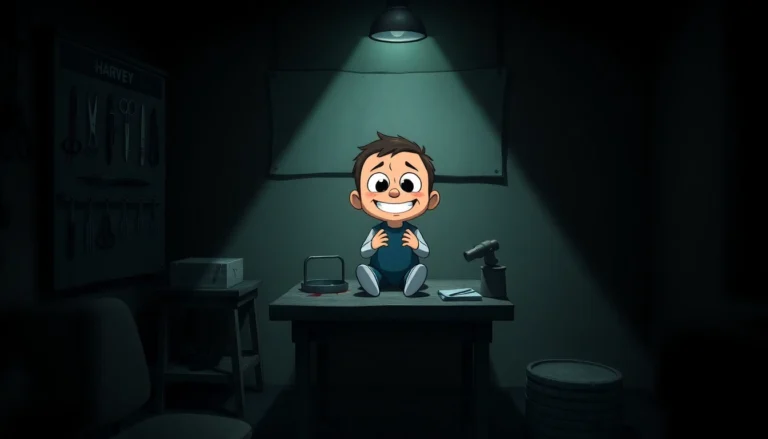
Overview/Context: BLOODMONEY – A Psychological Horror Clicker Experience
In the realm of indie horror and psychological thrillers, blood money stands out as a disturbingly immersive dark clicker game that challenges players to confront their moral boundaries. Designed by the talented SHROOMYCHRIST, this game plunges players into a harrowing psychological journey where every click not only accumulates wealth but also deepens moral decay. It’s a game that doesn’t shy away from uncomfortable questions: How much are you willing to sacrifice for survival? How far can you push morality before losing your humanity? As you navigate through a bleak narrative filled with disturbing visuals, moral dilemmas, and escalating violence, you are forced to confront the darker aspects of human nature and the cost of desperation.
The Dark Narrative of BloodMoney
Context and Setting
At its core, bloodmoney weaves a haunting story about a person diagnosed with a life-threatening condition. Facing a staggering medical bill of $25,000, the protagonist finds themselves in a bleak predicament: immediate medical intervention is essential, yet funds are unavailable. This desperation becomes the fertile ground for a sinister proposition from Harvey, a cheerful and seemingly innocuous character. The narrative explores themes of morality, survival, and the terrifying choices individuals make when pushed to their limits.
Harvey – The Paradox of Innocence
Harvey, with his bright demeanor and innocent appearance, initially seems helpful. He offers a strange solution: clicking on him to earn money. Each click yields financial gain but causes Harvey pain and suffering. As the game progresses, this simple mechanic becomes a twisted reflection of moral compromise. Harvey’s reactions and visuals gradually shift from cheerful to terrified and pained, emphasizing the psychological toll of the choices made. The game masterfully uses this duality to question whether true innocence exists in a world where survival demands moral sacrifice.
BloodMoney Game Mechanics
Clicking Mechanics and Earning Money
The primary gameplay revolves around clicking on Harvey, which generates a fixed amount of money per interaction. Initially, each click seems harmless and straightforward. Players are tasked with accumulating the necessary $25,000 to cover medical expenses. The simplicity of the mechanic belies the escalating horror beneath the surface. Every click increases Harvey’s suffering, subtly hinting at the moral cost of each dollar earned. This mechanic creates a visceral tension: how much suffering is acceptable for survival?
Upgrade System and Multiple Pathways
As players progress, they unlock a shop offering various upgrades designed to boost earnings. These upgrades range from innocuous items like pillows to increasingly violent tools such as scissors, needles, and hammers. Each purchase influences gameplay by increasing profit margins but also intensifies Harvey’s pain. The upgrade system introduces multiple pathways—players can choose to minimize harm, opt for moderate violence, or maximize efficiency regardless of suffering. This flexibility allows for diverse playthroughs and moral exploration.
Visual and Psychological Effects of Upgrades
Each upgrade leaves a visual and emotional imprint on Harvey. For example, while initial tools may cause minor discomfort, later weapons evoke more disturbing reactions—fear, agony, and despair. The game subtly tracks these choices, influencing subsequent visual cues, dialogues, and Harvey’s appearance. This dynamic creates an unsettling atmosphere, as players witness Harvey’s transformation from a cheerful helper to a broken, suffering figure. The game’s design effectively immerses players in this psychological descent, making each decision feel weighty and impactful.
Gameplay Dynamics: Multiple Pathways & Time Pressure
Multiple Pathways and Moral Choices
The core of BloodMoney’s replayability lies in its multiple pathways. Players can choose a path of minimal harm—using only non-violent tools like scissors—or escalate to violent options like knives and hammers, each with different consequences. The game subtly tracks these choices, which influence endings and the overall moral narrative. What’s compelling is that even with aggressive choices, it’s possible to achieve different endings, illustrating that morality is complex and multifaceted.
Time Pressure and Urgency
The ticking clock adds a layer of urgency. The protagonist’s medical bills must be paid within a limited timeframe, heightening tension. This pressure pushes players toward efficient earning strategies, sometimes at the expense of morality. The urgency underscores the real-world dilemma of choosing between ethical integrity and survival, making the experience intensely personal and visceral.
The Psychological Horror and Emotional Impact
Visual Cues and Atmosphere
BloodMoney employs subtle visual cues—Harvey’s changing expressions, deteriorating surroundings, and increasingly disturbing imagery—to amplify the sense of unease. As the game progresses, Harvey’s cheerful facade fades, replaced by expressions of pain, fear, and resignation. These visual elements evoke empathy and discomfort simultaneously, forcing players to confront their own moral boundaries.
Dialogue and Sound Design
The dialogue is minimal but impactful. Harvey’s words shift from cheerful encouragement to fearful pleas, mirroring his physical transformation. The soundscape further enhances the tense atmosphere, with unsettling sounds that grow louder and more chaotic as the suffering intensifies. This combination immerses players deeply into Harvey’s psychological torment, making every decision emotionally charged.
The Moral Dilemma: Harvey’s Suffering and Player Choices
Balancing Profit and Morality
At the heart of BloodMoney lies a chilling moral dilemma: how much suffering is acceptable to ensure your survival? Players are faced with choices that test their conscience—minimizing Harvey’s pain or maximizing profits—each leading to different emotional and moral outcomes. The game challenges players to reflect on their own ethical boundaries in a context where desperation overrides morality.
The Hidden Depths of Harvey
Throughout the game, subtle hints suggest Harvey may not fully understand what’s in the shop. His surprise at more violent tools implies he expects harmless items, adding a layer of innocence that contrasts sharply with the brutality of the upgrades. This dichotomy intensifies the moral complexity, as players realize they are not just harming Harvey but also manipulating an innocent who might not comprehend the full extent of the violence.
Multiple Endings and Their Significance
The Good Ending
Achieved by minimizing Harvey’s suffering and choosing the least violent options—such as using scissors—this ending offers a glimmer of moral redemption. The protagonist reaches the financial goal without causing excessive harm, highlighting that survival doesn’t have to come at the expense of morality. This path reflects hope and integrity amidst despair.
The Normal Ending
A balanced approach involving moderate violence—perhaps employing tools like the knife—leads to a more neutral conclusion. Harvey’s suffering is noticeable but not overwhelming. The protagonist pays the bills, but at a moral cost, prompting reflection on the compromises made.
The Bad Ending
Maximizing profit regardless of Harvey’s pain—using the most violent tools—culminates in a grim conclusion. Harvey is left in agonizing torment, and the protagonist’s moral descent is laid bare. This ending starkly questions the cost of greed and the loss of human empathy in the face of survival.
Community Insights and Player Reactions
Player Reflections
Fans of BloodMoney have shared powerful insights, emphasizing how the game’s emotional design fosters genuine empathy and discomfort. Many report feeling a profound sense of guilt or moral conflict, even recognizing the game’s fictional nature. The community appreciates the game’s ability to evoke real emotional responses, making it a notable example of interactive psychological horror.
Replaying for Deeper Understanding
Players often revisit the game to explore different pathways, discovering that subtle choices significantly influence outcomes. The game’s tracking system is more nuanced than it appears, rewarding multiple playthroughs with deeper moral insights. This encourages players to reflect on their values and the nature of moral compromise.
The Psychological Impact and Ethical Questions
Engaging with Morality and Human Nature
BloodMoney pushes players to consider fundamental questions: Are we inherently good or evil? When faced with death or suffering, do moral boundaries dissolve? The game acts as a mirror, revealing the darker facets of human psychology, especially under stress. It challenges players to confront their own ethical limits in a visceral way.
Empathy and Discomfort
The emotional design elicits empathy for Harvey, creating a moral tension that remains long after gameplay. Players often find themselves questioning whether their choices are driven by survival instincts or a darker desire for profit. The game’s unsettling atmosphere fosters introspection about how society values life, morality, and human suffering.
Comparing BloodMoney to Other Horror and Clicker Games
Unique Features and Innovations
Unlike traditional horror games that rely on jump scares or overt violence, BloodMoney employs subtle psychological horror, using visual cues and moral dilemmas to evoke deep emotional responses. Its clicker mechanic, combined with moral complexity, sets it apart from typical idle or incremental games. The game’s focus on ethical choices elevates it into a thought-provoking experience.
Influence and Legacy
BloodMoney has influenced indie developers and horror enthusiasts, inspiring discussions about morality in gaming. Its blend of psychological horror and clicker gameplay demonstrates that storytelling and emotional impact can be effectively integrated into simple mechanics, making it a notable milestone in experimental game design.
Conclusion: Facing Humanity’s Dark Side
BloodMoney is more than just a dark clicker game; it’s a mirror held up to human nature, forcing players to confront uncomfortable truths about morality, survival, and greed. The game masterfully intertwines gameplay mechanics with emotional storytelling, creating a haunting experience that lingers long after the screen goes dark. Whether you choose to minimize Harvey’s suffering or push for maximum profit, each decision reflects a facet of our own moral compass. The game challenges us to ask: how far are we willing to go when our lives hang in the balance? Ultimately, bloodmoney invites us to explore the depths of darkness within ourselves, making it a profound and unsettling journey into the human psyche.






